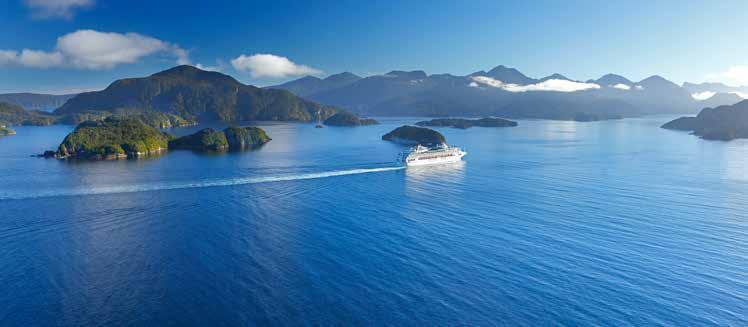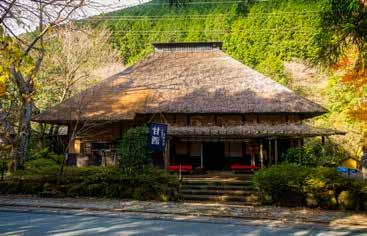
2 minute read
TRAVEL Escapes
from Ohlala Qatar October 2022
by Fact ME
Perhaps the most treasured part of the national park is its fiords or ‘sounds’, of which Milford and Doubtful are the largest. The best way to explore these pockets of heaven and witness the beauty of the wildlife is by kayak, including shorter kayaking day trips or, if you feel more daring, multi-day kayaking trips where you get to camp in the wonderous wilderness of the park’s woods. You can additionally take the overnight cruise as you doze off to the tranquil soft splashes of the sounds. As you go deeper, look out for bottlenose dolphins and fur seals. When disembarking, take a kayak or small boat to explore the coastline. You’ll just be able to catch the native Fiordland Crested Penguin or Tawaki, whose breeding season ends in November, as well as the Kokora, known as the smallest penguins in the world. Don’t forget to visit the Punanga Manu o Te Anau Bird Sanctuary to meet some of the rarest native bird species, including the flightless Takahē and the Kākā, the native forest parrot.
Lake Te Anau is another prized spectacle of the park and is the largest in the world of the southern glacial lakes. Surrounded by fiords and high mountain ranges, its broad waters induce a great sense of calm. Take the scenic boat cruise across the lake and pass by the sculpted limestone, whirlpools and tumbling waterfalls before heading into the Glowworm Caves as you admire the glittering creatures overhead. Lastly, a trip to Fiordland would not be complete without setting out on a hiking trail. The well-known Milford Track will usher you through dense beech and pod carp forests, snow-capped summits, magnificent waterfalls and deep green valleys.
FUJI HAKONE IZU NATIONAL PARK, JAPAN

Mount Fuji, the lone but sublime volcanic peak, has dominated Japan’s culture and history for centuries and is a symbol of Japanese beauty, identity and art, as seen in many of the renowned Japanese artist Katsushika Hokusai’s works. The peak is adorned with snow for much of the year. As you wander through the evergreen forests and explore the surrounding regions of the marvel, all of which has been deemed a UNESCO World Heritage Site, you will feel both a sense of calm and overwhelming awe. South of Mount Fuji are the Izu Islands, which harbour a curious natural charm seldom found anywhere else. The islands are home to a variety of unusual migratory birds and plant species, especially at the Hakone Botanical Gardens, which houses over 3,000 species. Grab the chance to swim with Indo-Pacific bottlenose dolphins off the coast of the islands or snorkel to see the underwater lava formations. You can also explore the park’s many lava caves, bathe in its hot springs and admire the majesty of Shiraito Falls. Stroll through the labyrinthine and luscious beech forests or hike the Odoriko Trail Road from the town of Kawazu until you come across seven lovely waterfalls known as Kawazu Nanadaru. Trek the paths that meander through the vast Aokigahara Jukai forest located on Mount Fuji’s slopes and revel in a few hours of ‘forest bathing’ or mindful walking among the trees, a scientifically proven Japanese therapy known as Shinrin-Yoku. Finally, walk up the Old Tokaido Road from Moto-Hakone to a 400-yearold teahouse called Amazake Chaya, where you can relish the traditional Japanese rice drink as well as some rice cakes.












